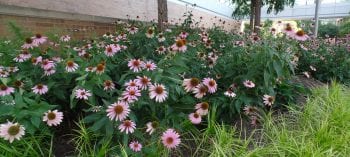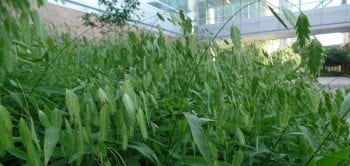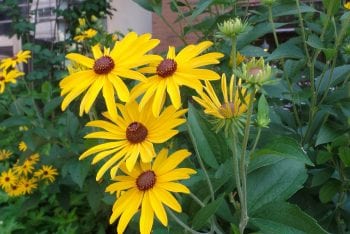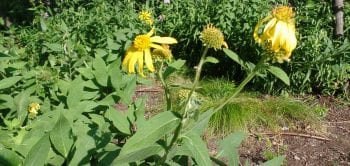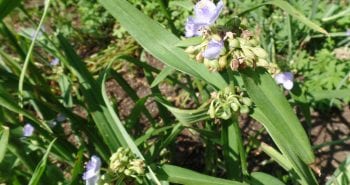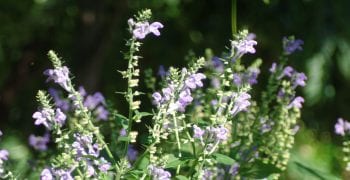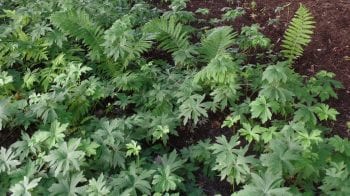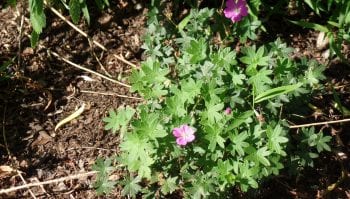If you haven’t walked through Hope Plaza recently, now is the time! The native garden beds are currently sporting their summer best with a variety of bold and subtle floral displays. The WUSM landscape design and maintenance crew focuses on planting native plants where possible because of the reduced irrigation needs and the benefits to local insects and other wildlife. Native plants require less irrigation because they are best suited to survive in a Midwest climate.
Designed to be an area of calm and healing, Hope Plaza is also a community hub for our campus. It is centrally located near the busy Central West End Metrolink station and many of our most used campus buildings. The next time you’re walking through or enjoying your lunch on one of the benches, take a look around at the surrounding native garden beds and you may spot some of the following plants and maybe a few pollinators too!
As you exit the Central West End Metrolink station, you will first experience an impressive display of Purple Coneflower (Echinacea purpurea). These flowers are great for attracting birds and butterflies and can tolerate drought and poor soil conditions – making it a staple for many native garden plantings throughout the Midwest.
Although not a showy flower, the Sea Oats (Chasmanthium latifolium) next to the Echinacea have unique seed heads that droop and wave in the breeze. Keep an eye on these seed heads as the summer progresses as they will change from green to a purple/bronze color by late summer and then to copper-colored in the fall. This native ornamental grass adds great texture and movement to a landscape throughout the year.
As you make your way around the plaza, you will see more colorful floral displays from the following native plants:
If you take a closer look around the garden beds, you will notice some of the subtler surprises as well. In the shadier locations under the link and building overhangs, you may spot some Sensitive Fern (Onoclea sensibilis). This Missouri native grows best in swampy wet areas, but can be found in average soils. It is called the sensitive fern because it is often damaged by frost and drought.
You may also walk past the pink flowers on the Wild Geranium (Geranium maculatum) if you aren’t looking closely. Preferring woodlands, these plants are found growing under some of the taller plants and native trees throughout the landscape.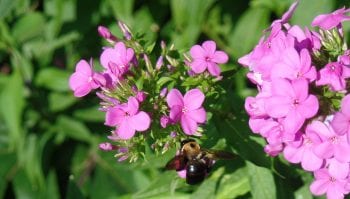
Last, but certainly not least, is one of the most noticeable bursts of color in the plaza right now. The Meadow Phlox (Phlox maculate) has a variety of pink to purple flowers that cluster together to form large clumps that are perfect for larger pollinators to land on for pollination. In this photo, you can see a Carpenter Bee (Xylocopa virginica) actively harvesting nectar from a flower. Carpenter bees are important pollinators for many fruits, vegetables, and flowers. They are less efficient at pollinating than bumble bees and honey bees, but still play an important role in the ecosystem. Males of this species are unable to sting, but may hover or quickly fly near you to investigate. Females are capable of stinging, but rarely do unless stepped on or deliberately squished or provoked. So unless you’re an untreated piece of lumber, there is no need to worry when you see these specific bees buzzing around.
This article was written by Alicia Hubert, sustainability coordinator for the WashU School of Medicine.
